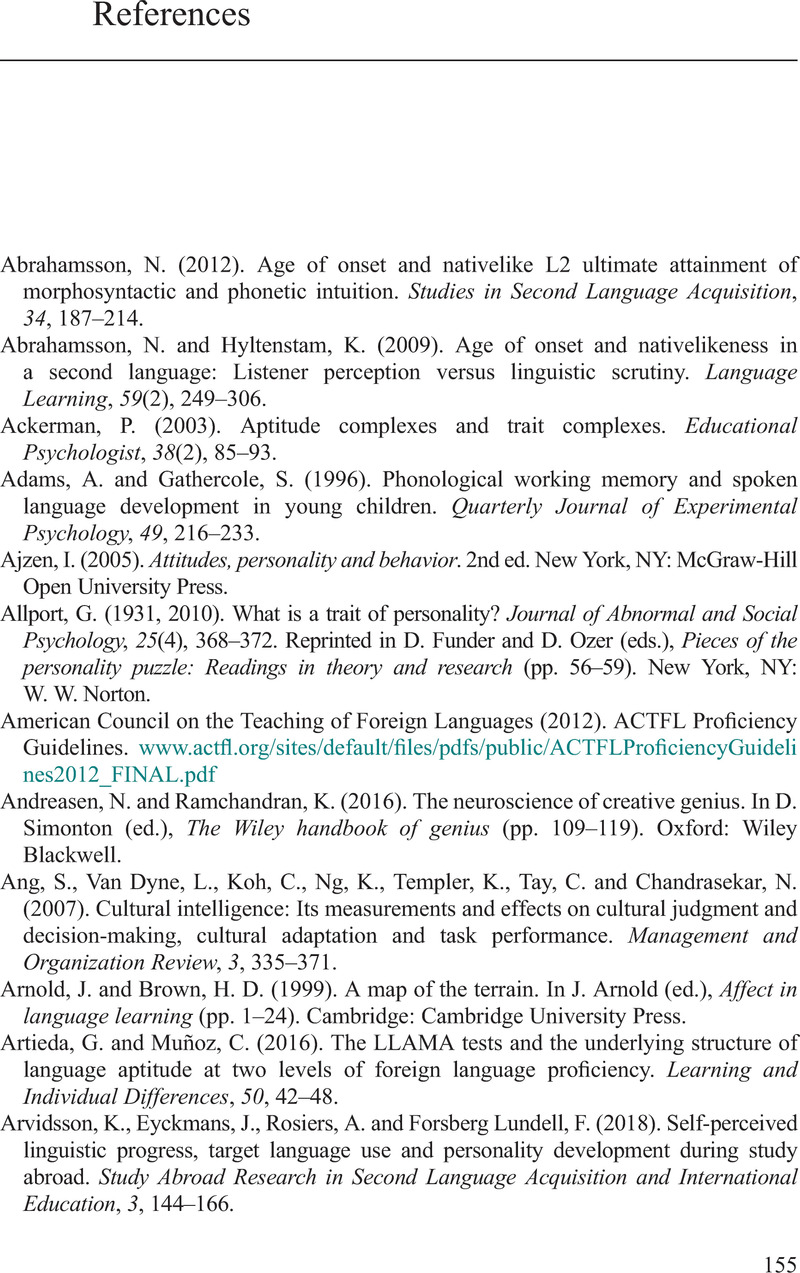Book contents
- The Gifted Language Learner
- The Gifted Language Learner
- Copyright page
- Contents
- Tables
- Introduction
- 1 Giftedness, Then and Now
- 2 The Gifted Language Learner
- 3 Personality Dimensions in GLL
- 4 Neurological and Cognitive Foundations of GLL
- 5 Emotion, Cognition, and Engagement in GLL
- 6 Paths Forward in Theory and Research
- References
- Index
- References
References
Published online by Cambridge University Press: 10 June 2021
- The Gifted Language Learner
- The Gifted Language Learner
- Copyright page
- Contents
- Tables
- Introduction
- 1 Giftedness, Then and Now
- 2 The Gifted Language Learner
- 3 Personality Dimensions in GLL
- 4 Neurological and Cognitive Foundations of GLL
- 5 Emotion, Cognition, and Engagement in GLL
- 6 Paths Forward in Theory and Research
- References
- Index
- References
Summary

- Type
- Chapter
- Information
- The Gifted Language LearnerA Case of Nature or Nurture?, pp. 155 - 195Publisher: Cambridge University PressPrint publication year: 2021

